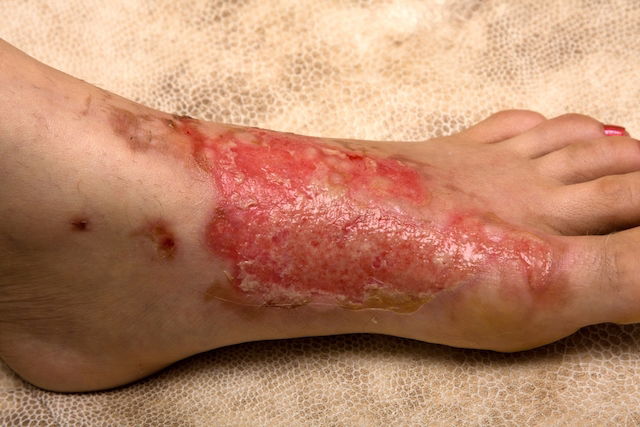Burn bandages for first-degree and second-degree burns can be done at home, using cold compresses and ointments purchased over-the-counter.
Bandages for more serious burns, like third-degree burns, should always be done in a hospital setting or burn center as they require special care to prevent infections.
Burn bandages should be changed as directed by your doctor. Burns with signs of worsening, like increased swelling, discharge, wound size and heat in the area should be further assessed by your doctor.
Bandage for 1st degree burn

For this type of burn, you can apply a bandage as follows:
- Wash the area with cold water and mild soap for more than 5 minutes to cool the skin and cleanse it of any microorganisms
- In the first few hours, apply a cold compress and change it whenever it is no longer cold
- Apply a thin layer of a rich moisturizing cream, but avoid applying Vaseline, as the grease can make the burning worse
Sunburns are generally a first-degree burn and can be treated by applying an after-sun lotion to relieve pain and prevent the skin from peeling. It is also important to use sunscreen and avoid exposure to the sun during the hottest hours.
Bandage for 2nd degree burn

For this type of burn, you can apply a bandage as follows:
- Wash the burned area with water for more than 10 minutes to clean the area and reduce pain
- Avoid breaking any blisters that have formed, but, if necessary, use a sterilized needle;
- Apply gauze with 1% silver sulfadiazine ointment
- Bandage the area carefully with a bandage
- For burns larger than 1 hand, it is recommended to go to the emergency room for a therapeutic dressing, as the risk of infection is greater
After healing, to prevent the area from becoming discolored, it is recommended to apply a sunscreen above 50 SPF and protect the area from the sun.
Also recommended: Second Degree Burn: What It Looks Like, Healing Time & Treatment tuasaude.com/en/second-degree-burnBandage for 3rd degree burn

The dressing for this type of burn should always be done in a hospital-setting or burn center as this is considered to be a serious burn.
In most cases, it is generally necessary to be hospitalized for IV fluids or to perform skin grafts.
If you have any doubt about the the depth and severity of your burn, you should seek urgent medical assessment






























